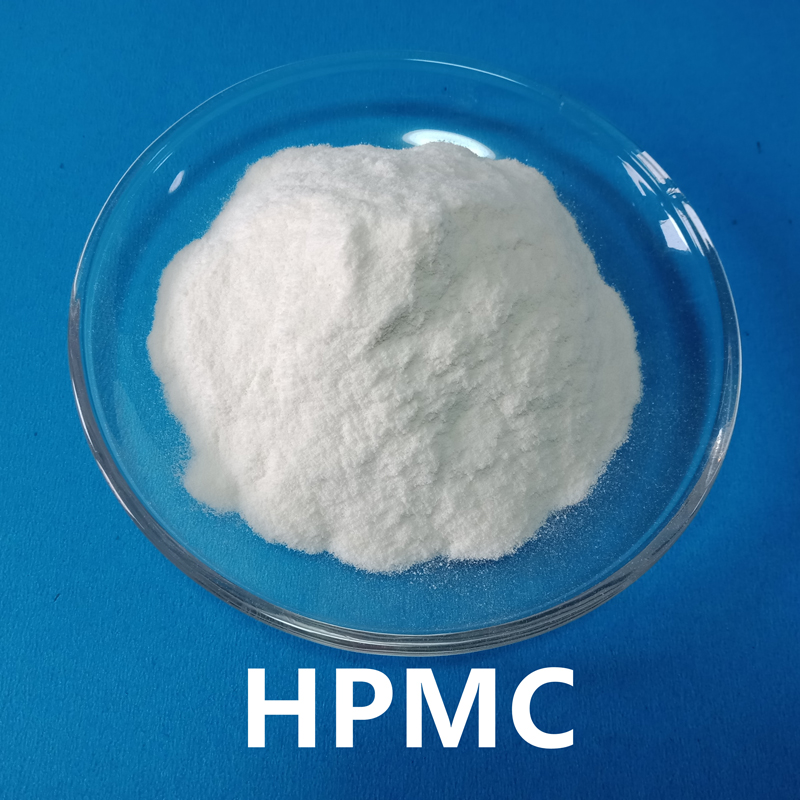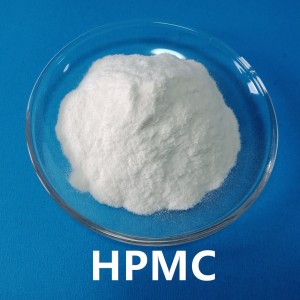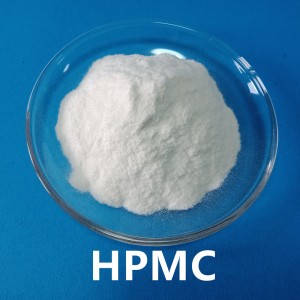HPMC Cellulose for American Samoa
we could supply good quality goods, aggressive cost and very best purchaser assistance. Our destination is “You come here with difficulty and we supply you with a smile to take away” for HPMC Cellulose for American Samoa, We warmly welcome prospects, organization associations and mates from everywhere in the earth to get in touch with us and request cooperation for mutual benefits.
we could supply good quality goods, aggressive cost and very best purchaser assistance. Our destination is “You come here with difficulty and we supply you with a smile to take away” for Hydroxypropyl Methyl Cellulose HPMC and Pharmaceutical Grade HPMC, Our products have won an excellent reputation at each of the related nations. Because the establishment of our firm. we’ve insisted on our production procedure innovation together with the most recent modern day managing method, attracting a sizable quantity of talents within this industry. We regard the solution good quality as our most vital essence character.
Product Description
CAS NO.:9004-65-3
Hydroxypropyl Methylcellulose(HPMC), also named as hypromellose , is a kind of non-ionic cellulose ether. It is a semi-synthetic, inactive, viscoelastic polymer. It is often used in ophthalmology as a lubrication department, or as an excipient or excipient in oral medicine. It is commonly found in various types of commodities. As a food additive, hypromellose can play the following roles: emulsifier, thickener, suspending agent and substitute for animal gelatin, that function as a thickener, binder, film-former, surfactant, protective colloid, lubricant, emulsifier, and suspension and water retention aid.
Hydroxypropyl Methylcellulose (HPMC) Construction Grade can be seen as a generic term for mixed etherification cellulose ethers. Common to these cellulose ethers is the methoxylation. Additionally, the reaction can be achieved with propylene oxide. We can provide both non-modified grade and modified grade HPMC/MHPC, which has long open time, good water retention, excellent workability and Good slipping resistance etc.
Hydroxypropyl Methylcellulose (HPMC) Construction Grade are widely used in Tile adhesives, dry mixed mortar, wall putty, Skim coat,joint filler, self-levelling , cement and gypsum based plaster etc.
Chemical Specification
| Specification | HPMC 60E ( 2910 ) |
HPMC 65F ( 2906 ) |
HPMC 75K ( 2208 ) |
| Gel temperature (℃) | 58-64 | 62-68 | 70-90 |
| Methoxy (WT%) | 28.0-30.0 | 27.0-30.0 | 19.0-24.0 |
| Hydroxypropoxy (WT%) | 7.0-12.0 | 4.0-7.5 | 4.0-12.0 |
| Viscosity(cps, 2% Solution) | 3, 5, 6, 15, 50, 100, 400,4000, 10000, 40000, 60000,100000,150000,200000 | ||
Product Grade
| Construction Grade HPMC | Viscosity(NDJ, mPa.s, 2%) | Viscosity(Brookfield, mPa.s, 2%) |
| HPMC TK400 | 320-480 | 320-480 |
| HPMC TK60M | 48000-72000 | 24000-36000 |
| HPMC TK100M | 80000-120000 | 38000-55000 |
| HPMC TK150M | 120000-180000 | 55000-65000 |
| HPMC TK200M | 180000-240000 | 70000-80000 |
Application fields
1.Construction:
As a water-retaining agent and retarder of cement mortar, it makes the mortar pumpable. Used as a binder in plaster, putty powder or other building materials to improve spreadability and prolong open time. The water retention property of hydroxypropyl methylcellulose HPMC prevents the slurry from cracking due to drying too fast after application, and enhances the strength after hardening.
1) Tile Adhesives
Standard tile adhesives fulfil all tensile adhesion strength requirements of a C1 tile adhesive . Optional they can have an improved slip resistance or an extended open time . Standard tile adhesives can be normal setting or fast setting .
Cement tile adhesives have to be easy to trowel. They must provide long embedding time, high slip resistance and sufficient adhesion strength. These properties can be influenced by HPMC. Adhesives for block laying are used to build up walls of aerated concrete blocks, sand-lime bricks or standard bricks. Tile adhesives ensure an excellent bond between substrate and insulating boards. HPMC improves the workability of Tile adhesives and increases both adhesion and sag resistance.
•Better workability: lubricity and plasticity of plaster is ensured, mortar can be applied easier and quicker.
•Good water retention: prolonged opening time will make tiling more efficient.
•Improved adhesion and sliding resistance: especially for heavy tiles.
2) Dry mixed mortar
Dry mixed mortar are mixtures of mineral binders, aggregates and auxiliaries. Depending on the process, there is a distinction between hand and machine application. They are used for base coating, insulation, renovation and decorative purposes.Dry mixed mortar based on cement or cement/hydrated lime can be employed for exterior and interior work. Machine applied renders are mixed in continuously or discontinuously working plastering machines. These enables coverage of large wall and ceiling areas by a highly efficient technique.
•Easy dry mix formula due to cold water solubility: lump formation can be easily avoided, ideal for heavy tiles.
•Good water retention: prevention of fluid loss to the substrates, the appropriate water content is kept in mixture which guarantees longer concreting time.
3) Self-leveling
Self-levelling floor compounds are used to smooth and level all kinds of substrates and can be used as an underlay for e. g. tiles and carpets. To avoid sedimentation and to maintain the flowability, low viscosity HPMC grades are used.
•Protection from water exudation and material sedimentation.
•No effect on slurry fluidity with low viscosity
HPMC, while its water retention characteristics improve the finish performance on the surface.
4) Crack Filler
·Better workability: proper thickness and plasticity.
·Water retention ensures prolonged work time.
·Sag resistance: improved mortar bonding ability.
5) Gypsum based Plaster
Gypsum is a well-established construction material for interior applications. It offers good workability and its setting time can be adapted for every application as required. Gypsum building materials generate a comfortable living atmosphere due to good humidity balance. Additionally, gypsum shows excellent fire resistance. However, it is not water resistant, therefore only interior use is possible. Combinations of gypsum and hydrated lime are very common in plaster formulations.
•Increased water demand: increased open time, expanded spry area and more economical formulation.
•Easier spreading and improved sagging resistance due to improved consistency.
6) Wall putty/Skimcoat
•Water retention: maximized water content in slurry.
•Anti-sagging: when spreading a thicker coat corrugation can be avoided.
•Increased mortar yield: depending on the weight of the dry mixture and appropriate formulation ,HPMC can increase the mortar volume.
7) Exterior Insulation and Finish System ( EIFS )
Cementitious thin bed adhesives are used to adhere ceramic tiles, to build walls of aerated concrete or lime stone bricks and to install exterior insulating finishing systems (EIFS).They offer an easy and light workability, a high efficiency and guarantee a long durability.
•Improved adhesion.
•Good wetting ability for EPS board and substrate.
•Reduced air entrancement and water uptake.
1. Construction industry: As a water-retaining agent and retarder of cement mortar, it makes the mortar pumpable. Used as a binder in plaster, plaster, putty powder or other building materials to improve spreadability and prolong operation time. It can be used to paste ceramic tiles, marble, plastic decoration, paste enhancer, and can also reduce the amount of cement. The water retention property of hydroxypropyl methylcellulose HPMC prevents the slurry from cracking due to drying too fast after application, and enhances the strength after hardening.
2.Ceramic manufacturing industry:
widely used as a binder in the manufacturing of ceramic products.
3.Coating industry:
As a thickener, dispersant and stabilizer in the coating industry, it has good compatibility in water or organic solvents. As a paint remover.
4.Ink printing:
As a thickener, dispersant and stabilizer in the ink industry, it has good compatibility in water or organic solvents.
5.Plastics:
used as mold release agents, softeners, lubricants, etc.
6.Polyvinyl chloride:
It is used as a dispersant in the production of polyvinyl chloride and is the main auxiliary agent for the preparation of PVC by suspension polymerization.
Packaging
The standard packing is 25kg/bag
20’FCL: 12 ton with pallet; 13.5 ton without pallet.we could supply good quality goods, aggressive cost and very best purchaser assistance. Our destination is “You come here with difficulty and we supply you with a smile to take away” for Factory Cheap Premium Pharmaceutical Grade Hydroxypropyl Methyl Cellulose HPMC for Industrial Applications, We warmly welcome prospects, organization associations and mates from everywhere in the earth to get in touch with us and request cooperation for mutual benefits.
Factory Cheap Hydroxypropyl Methyl Cellulose HPMC and Pharmaceutical Grade HPMC, Our products have won an excellent reputation at each of the related nations. Because the establishment of our firm. we’ve insisted on our production procedure innovation together with the most recent modern day managing method, attracting a sizable quantity of talents within this industry. We regard the solution good quality as our most vital essence character.






